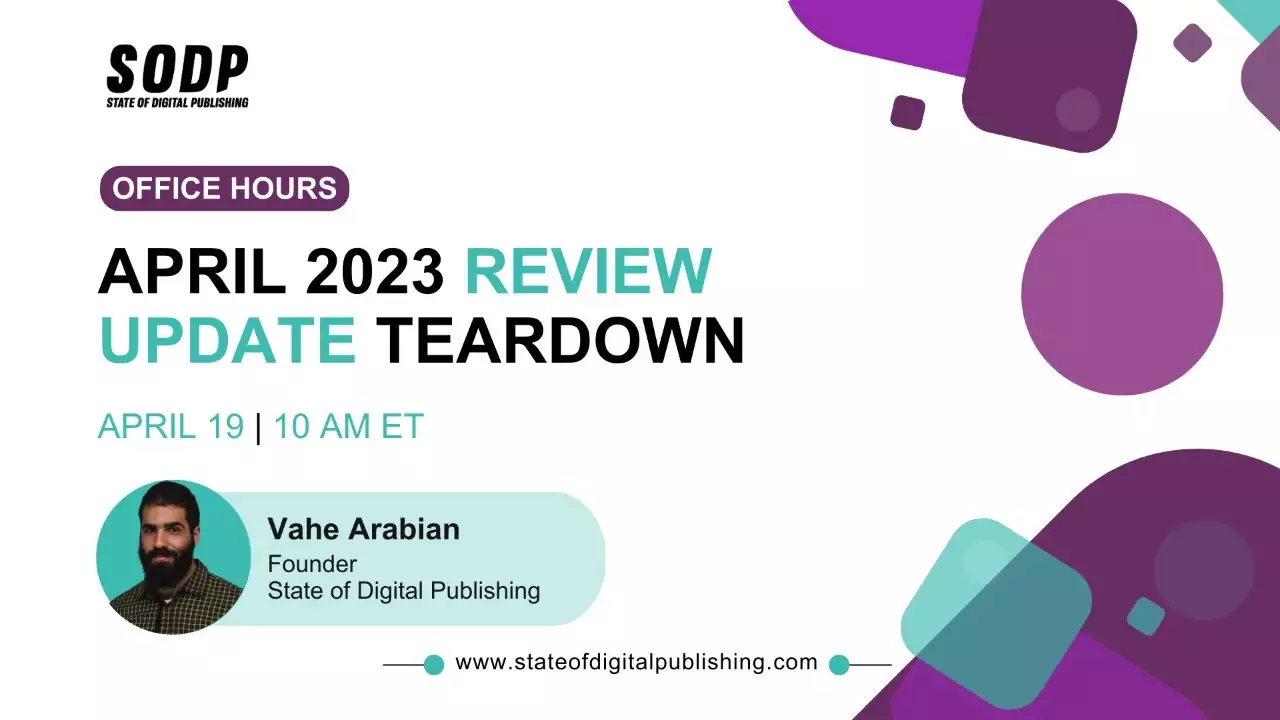Mobile traffic is up, but digital publishers see marginal engagement from these users. These common UX and monetization mistakes might be the reason why.
With mobile users representing over 51% of worldwide readership in 2020, device-based optimization has never been so important. Yet we frequently come across the following red flags when discussing UX best practices and monetization with our digital publishers. Not only do these constitute missed engagement opportunities, but user research indicates these mistakes could be costing publishers thousands of dollars in revenue. Here are the most common ones, along with concrete tips on how to create better habits across marketing, editorial and product teams.
Mistake #1 Leave mobile optimization for last
If mobile devices are now the predominant way new users experience a publisher’s website, how is it that they still bring fewer conversions than desktop? That’s often due to mobile optimization not being a company-wide priority.
Editors rarely create content with a mobile audience in mind, and marketing teams struggle to find space for their ad campaigns or newsletter sign-up forms due to the increased competition for real estate. Most often than not, mobile experiences are left in the hands of product teams with simple instructions to make a site “mobile responsive”. However, we know that users’ behavior is radically different depending on which device they’re using, which has an impact not only on what kind of content they consume – videos are a lot more popular on smaller devices – but also affects conversion rates. Not taking into account these behavioral differences when designing the mobile site is costing most publishers in revenue.
Our advice : Publishers new to this space should start by taking on a mobile-first approach; this means encouraging product, marketing and editorial staff to consume their own content on mobile. This will inform product design and enable publishers to achieve more successful marketing campaigns on their own sites. Publishers ready to take mobile optimization to the next level need to leverage their user data to design intelligent user journeys; serving content based on a visitor’s traffic source or frequency of visits can help solve your real estate challenges as well as yielding more returns.
Mistake #2 Getting the balance wrong between ads and recirculation
Balancing monetization and user satisfaction is a tightrope to walk – even more so when it comes to mobile. A study conducted by NielsenNorman revealed that although all users dislike ads regardless of their format, mobile visitors tend to report a stronger ad fatigue. Whilst savvy audiences understand the need for advertising to keep their favorite site free, slow loading times and intrusive ads will alienate the most loyal visitors. Ad density higher than 30% and videos that considerably slow down your mobile site also impact your search rankings negatively.
Our advice : When possible, auto-play ads should be reserved for desktop views only. Don’t be scared of cutting out the slowest ones: you will end up making more money as a result. Ad-funded sites looking for a way to boost impressions and clicks can sometimes overlook the impact of a strong engagement strategy in their revenue forecast. More ad revenue can be generated on mobile by focusing on keeping the visitors on the site thanks to content recirculation.
Mistake #3 Take a “one-size-fits-all” approach to your page design
If mobile deserves tailored marketing and editorial strategies, the same goes for UX. Mobile users will interact with a site differently based on their phone screen size and how they’re holding it. This has implications on where to position display ads, CTAs and site navigation.
On a content page, widgets added to the sidebar will fall down beneath an article, usually below the comments section and ad boxes. With mobile users scrolling through 25% of the page on average, these call-to-action buttons and widgets often won’t be seen at all.
Our advice : For most publishers, Bibblio recommends placing sticky ads and cookie consent banners at the top of the page, and leaving the screen area called “The Thumb Zone” for content navigation and conversion incentives. CTAs such as newsletter sign-ups can for example be activated at an 80% scroll rate to target your most engaged readers. For content recirculation, placing an in-text widget at 25% of the article can be a way to engage fleeting users. Opt for a mobile-friendly design, such as the carousel format.
Mistake #4 Slow page load time
53% of visits are likely to be abandoned if pages take longer than three seconds to load. The higher latency on mobile networks means optimizing for page speed is even more important here than on desktop. High-performing sites engage and retain users better than low-performing ones, and also see their conversion rate increase as a result. Studies have also shown the negative impact poor performance can have on revenue. For example, the BBC reported losing an additional 10% of users for every additional second their site took to load, and Amazon found that a delay in page load by one second would cost them a loss of $1.6 billion in sales each year. However, despite extensive proof that mobile speed impacts publisher revenue, the majority of mobile web sites do not meet this bar. The biggest culprits: external JavaScript and CSS loading too soon and blocking rendering.
Our advice : Start by identifying your mobile site’s weak spots; Google PageSpeed Insights is a great tool to figure out what slows down your pages, with helpful suggestions that will help you prioritize when making changes. Keep video backgrounds and animations to your desktop homepage and focus on simpler navigation menus for your mobile site. When evaluating third-party software, always inquire about AMP compatibility.
Mistake #5 Ignore mobile-only referral sources
Search constitutes 80% of mobile traffic, but 2020 has seen a rise of traffic coming from mobile aggregators, with Google Chrome Suggestions and Google News now referring traffic at a much higher pace than Twitter. Local news publishers especially stand to get a significant boost in traffic as popular news aggregators are now expanding their regional news coverage. These users are still elusive and tricky to convert, mostly due to the fact that they are considered a subset of the larger platforms instead of being targeted as their own channel.
Our advice : Publishers should get to know their mobile audience better, for instance by developing A/B tests targeting visitors that accessed a page via mobile news aggregators as a distinct user segment. As always, experimentation with layout and content experiences is key to understanding what makes a user segment tick and what actions are effective at pushing them down the user funnel.









